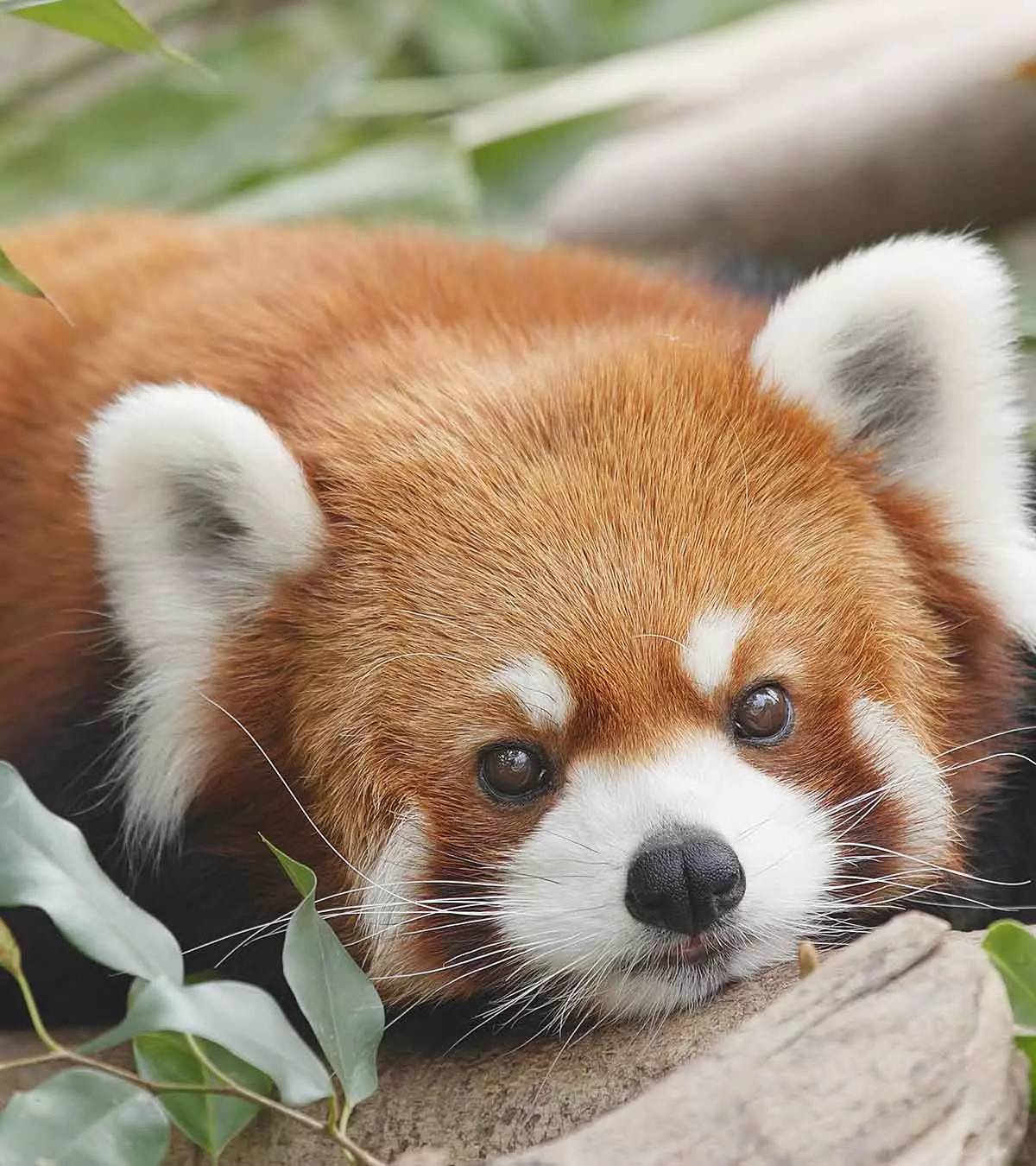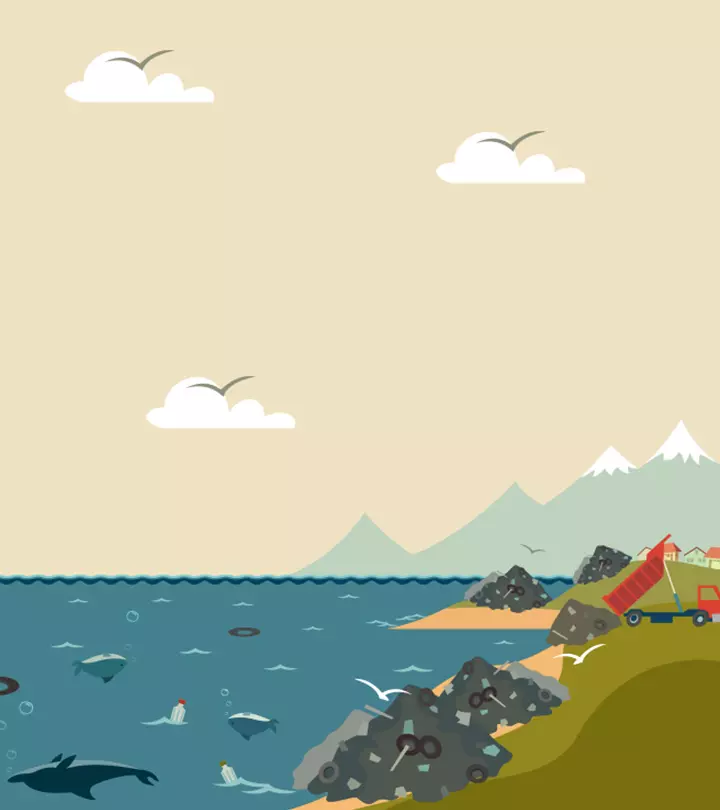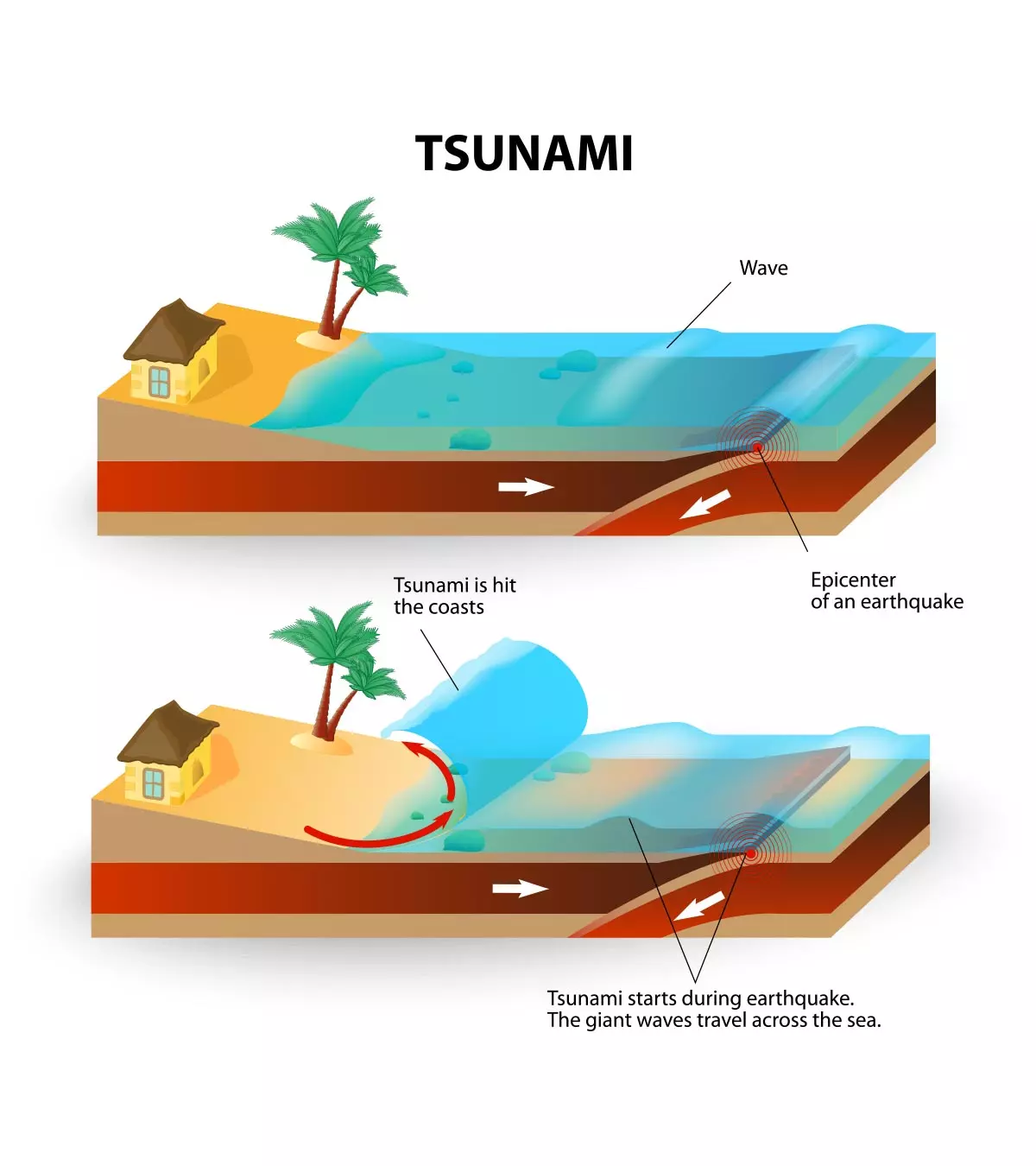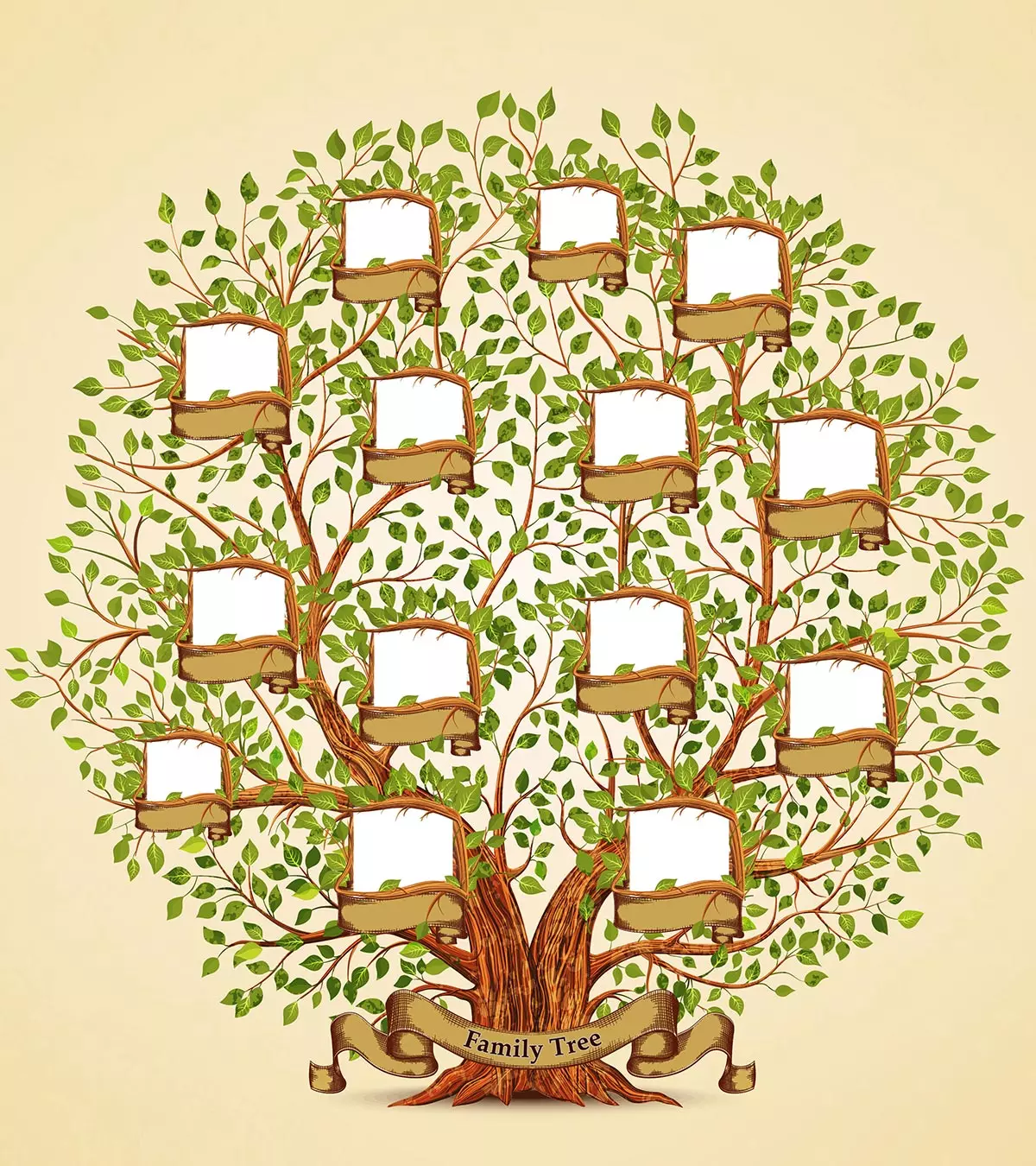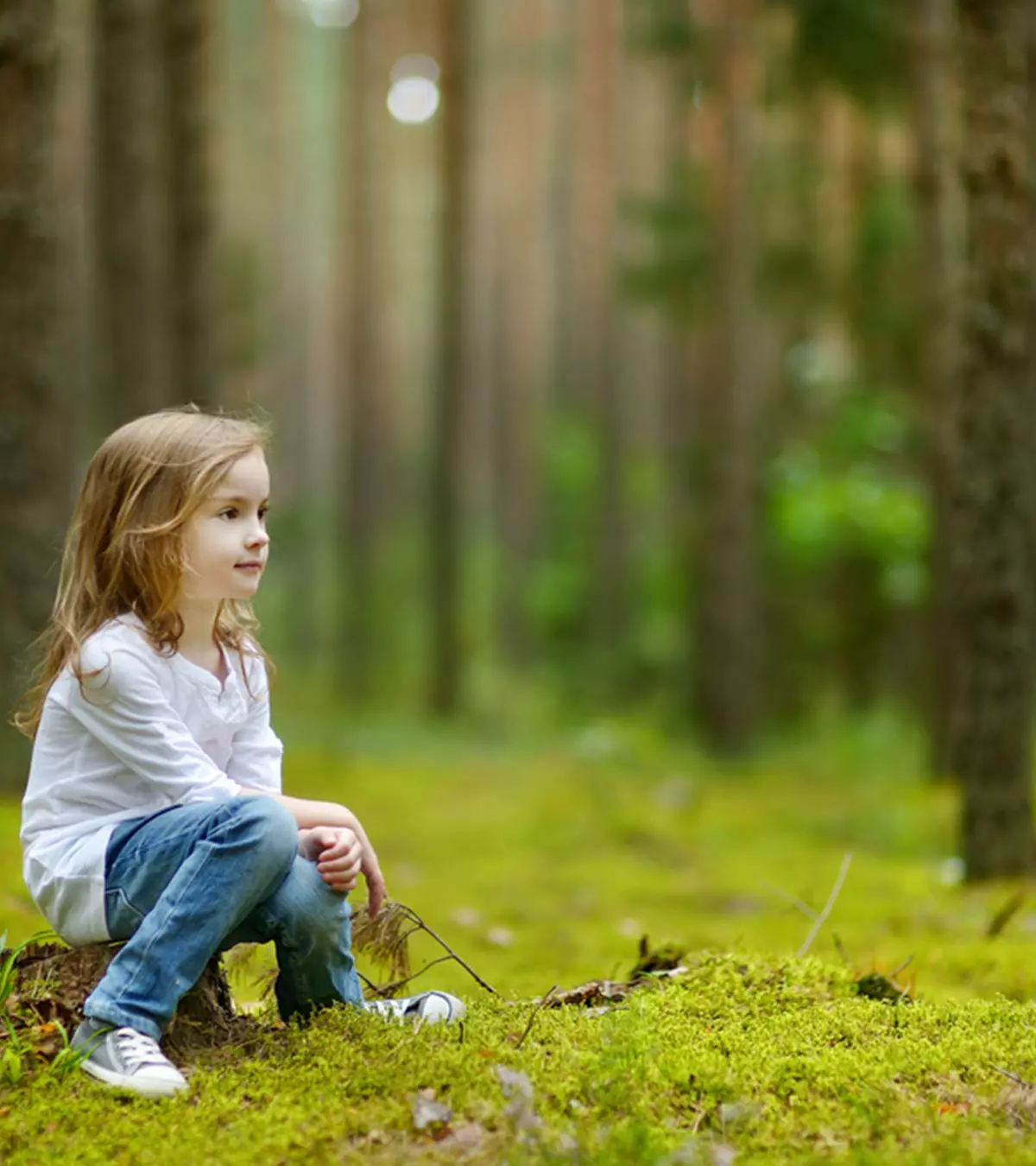
Image: Shutterstock

Trees have existed on this planet for over 300 million years. The importance of trees should be taught to children from a young age, and sharing some facts about forests for kids can be an interesting way to do that.
Trees were the home to our arborealiLiving in trees. ancestors. They dominate about one-third of the earth’s surface, and besides being our source of oxygen, they form an ideal habitat for animals and birds. We may not live on trees, but we certainly cannot live without them.
However, trees are often taken for granted. Hence, this post explores some interesting facts about forests to help kids learn the importance of trees.
Key Pointers
- The forest zones are tropical, temperate, and boreal or taiga based on their distance from the equator.
- Forests are vital for biodiversity, climate change mitigation, and ecological and economic sustainability.
- There are over 60,000 tree species on the Earth.
Types Of Forests
There are three major forest zones divided based on their distance from the equator.
- Tropical
- Temperate
- Boreal or taiga
1. Tropical forests
Typically, you will find tropical forests around the equator in Southeast Asia, Africa, and South America. They have stable temperatures throughout the year. The high temperature, abundant rainfall, and twelve hours of light per day promote plant growth, and almost any living being can thrive here. Seasons are divided into dry and rainy. Most tropical forests witness at least 200 cm of rain each year. You will find plants and animals different from anywhere else on the planet in these forests.
Tropical forests are further divided into:
- Evergreen forests
- Subtropical
- Tropical and subtropical coniferous
- Seasonal forests
- Dry
- Montane
2. Temperate forests
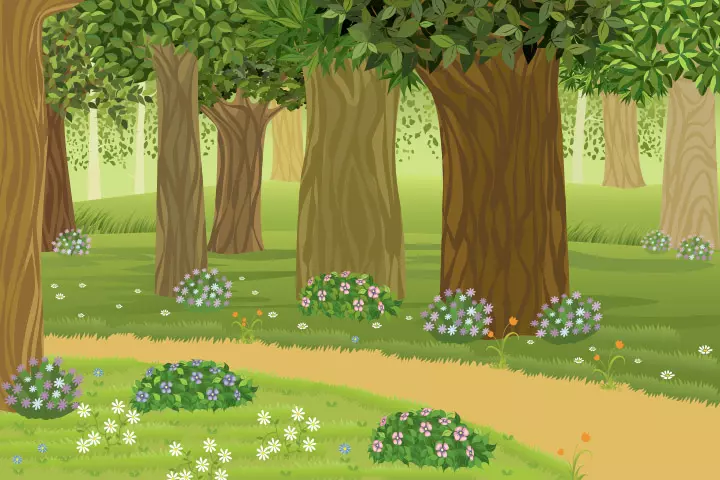
Image: Shutterstock
They are located between tropical regions with a moderate climate and four seasons: winter, fall, spring, and summer. Due to abundant precipitation and decayed leaves, the soil is fertile and can support various plants such as birch, oak, and maple. Generally, deciduous trees account for a large part of the tree composition.
Temperate forests are further divided into:
- Mediterranean
- Dry coniferous forest
- Temperate broad-leaved rainforest
3. Boreal forest (taiga)
The boreal forest climate is extremely harsh, but migratory birds and animals could adapt to such frigid temperatures. In Russia, Alaska, and Canada, you will find such forests primarily composed of conifers and deciduous trees.
Uses Of A Forest
Forests are much more than trees. They provide habitats for all kinds of plants, animals, birds, and even humans and protect the overall health of other life forms on the planet.
1. Climate stability
Due to photosynthesis, forests are primary contributors to the Earth’s climate. They prevent climate change by releasing oxygen and absorbing carbon dioxide, controlling temperature rise, and purifying the atmosphere.
2. Ecological benefits
Forests help minimize the force of rainfall on the soil surface, preventing soil erosion. They also prevent runoff by absorbing water, so the topsoil will not wash away. Forests are natural water filters. They restore underground aquifers, collect and store water. Finally, they increase humidity, which affects temperature and rainfall.
3. Biodiversity

Image: Shutterstock
Forests are one of the only landscapes with such extensive biodiversity. Among the various trees, shrubs, bushes, fruits, plants, animals, and birds, , you will find multiple species in forests.
4. Economic importance
Several communities survive on forest animals and vegetation, also a significant source of income for many people. Several medical drugs are produced from plants derived from these forests. Besides, forests provide raw materials for manufacturing industries and produce dyes, spices, and gums. Forests also promote eco-tourism and offer local communities educational experiences and financial benefits.
 Quick fact
Quick fact25 Facts About Forests For Kids
1. Forests cover large areas
The total forest area is about 5000 m2 or 4.06 billion hectares, accounting for 31% of the Earth’s land area. Ten countries own nearly two-thirds of the world’s forests. Here is some information: Russia 7.8 million square kilometers, Brazil 4.8 million square kilometers, Canada 3.1 million square kilometers, the United States 3 million square kilometers, China 1.8 million square kilometers, and 1.8 million square kilometers in the Democratic Republic of Congo.
Over the last three decades, deforestation has been on the decline. As you can see in the chart below, the rate of net forest loss dropped from 7.8 million hectares every year from 1990 to 2000 to 4.7 million hectares yearly from 2010 to 2025. The reduction in net forest loss can also be attributed to afforestation and the natural expansion of forests.

Global average change in forest area (1990-2025)
Source: Global Forest Resources Assessment 2025; Food and Agriculture Organization of the United Nations2. Forests have enormous biodiversity
Forests are home to more than 50% of all plants, animals, bacteria, and fungi. Depending on the location, the forest area equivalent to two football fields’ size may have more than 400 tree species. Due to consistent temperature and sufficient rainfall, tropical rain forests are the most biologically diverse. The Amazon rainforest has recorded the highest biodiversity ever. Other hotbeds where various species can be found are the Congo Basin, Central America, northwestern South America, New Guinea, and Borneo.
Eric and Sarah, a Canadian couple, traveled to the Amazon Rainforest and shared their wholesome experience of the large diversity of flora and fauna they encountered. Recounting their experience during a boat ride in one of the river canals, they say, “We saw four different species of monkeys. We saw the Woolly monkey, the Squirrel monkey, the Saki monkey, and a Red Howler monkey from afar. This is apparently the biggest monkey in the country. So far, in 20 to 24 hours, we’ve seen 50 percent of the monkey species that are in the Amazon, which is so cool (i).”
3. Forests nurture the soil
As mentioned earlier, forests can prevent soil erosion. They can stabilize the soil and maintain the balance of the ecology. Trees, mammals, birds, and insects together play a crucial role in maintaining and enriching the soil’s quality.
4. Forests help fight climate change
One of the leading causes of climate change is the greenhouse effect, and carbon dioxide is one of the gasses that accelerate the greenhouse effect. Trees play a vital role in combating climate change by slowing it down. Forests are one of the largest carbon “sinks” globally. Carbon sinks absorb more carbon dioxide from the atmosphere.
Forests are known to trap and store carbon dioxide. When trees undergo photosynthesis, they absorb carbon dioxide and build new materials such as leaves, roots, and shoots.
 Did you know?
Did you know?5. Forests provide food

Image: IStock
Nearly 1.6 billion people in the world depend on forests for their livelihoods. About 60 million tribes and indigenous people rely entirely on forests. Forests are a rich source of food for most living beings,
6. Forests are natural aqueducts
Whether it is the world’s largest cities, such as Singapore, Mumbai, Madrid, Karachi, Jakarta, or the indigenous people, forests can provide relatively pure drinking water for everyone. Part of the drinking water in one-third of the world’s large cities comes from forests.
7. Forests keep things cool
When you are outdoors, where do you go for respite on hot summer days? Of course, trees. They shield you from the harsh sun rays and provide you a cool breeze to stay relaxed. The forest encourages rainfall, and rain causes a dip in temperatures. The benefit of rainfall is that it can promote the growth of trees!
8. Forests are good for the soul
On vacations, where do you head when you want to escape from the hustle and bustle of urban life? Mostly, you will visit a place surrounded by a forest. After your vacation, you feel energetic and refreshed. According to multiple studies, trees help reduce stress, improve immunity, and boost overall mood. You may have experienced this when you stayed in a resort surrounded by a forest.
9. Forests provide a way of life
Forests are not only vital for plants and animals. They are an essential income source for millions of people worldwide, including skilled artisans, biologists, environmentalists, engineers, etc.
10. Forests help the soil stay in place
Soil is significant for keeping the ecosystem healthy. It protects the roots of plants and provides essential nutrients for plants. When the soil dries up and erodes, it will harm plants and the entire ecosystem. Forests play a crucial role in protecting the soil. The trees’ leaves catch rainfall and allow only the required amount to fall to the ground. This ensures the soil doesn’t wash away. Besides, the leaves form a kind of shelter, ensuring that the soil is protected from strong sunlight, so it will not dry out and will not be blown away by the wind.
11. Forests clean water
How well does it feel about drinking cold water to relieve thirst on a hot day? Well, this is another reason you want to thank forests. When it rains, the leaves collect and absorb the water. Over time, they will slowly release the water into the soil, then filter and release it into nearby rivers, reservoirs, and lakes nearby. Did you know that nearly two-thirds of Canadians depend on drinking water from forest runoffs?
12. Forests give you so much
From the wood for your furniture, cartons to hold eggs to the paper you use, all come from the jungle. Next time you have some waste material at home, use it to make some exciting craft projects instead of discarding them. Make it your mission to reuse materials that fall from trees.
 Trivia
Trivia13. Forests are a breath of fresh air
The photosynthesis process allows trees to provide fresh air for humans and animals to breathe. The carbon dioxide you breathe out is absorbed by trees and converted into pure oxygen. Did you know that a mature tree is capable of providing enough oxygen for two to ten people each day?
14. Trees are social
Trees and fungal networks have a symbioticiA relationship between two or more organisms that live in close association and benefit from each other. relationship. Fungi help trees absorb more nutrients and water from the soil, and trees repay them by providing them with sugars from photosynthesis. This equation goes beyond giving and receiving. Trees are living things. Like other living beings, trees communicate with each other through the fungus on the forest floor. Think of it as an underground Internet connection connecting the entire wilderness. The fungi link the trees and form a large platform, suitable for resource sharing and communication. Interestingly, this sugar solution that the fungi receive is also routed to young sapling trees from the mother tree to ensure they can thrive.
15. Trees are old
Trees have existed since time immemorial. Yes, their lifespan is longer than that of all other species on the planet. Depending on the species, trees live as long as 100 to thousands of years! One of the oldest trees in existence even to this day is the Bristlecone Pine in the Great Basin of the United States. Similarly, olive trees can live up to 2,000 years. The oldest olive tree, the Vouves olive tree, is still producing olives in Greece!
16. Trees are perceptive

Image: Shutterstock
Did you know trees can perceive environmental parameters and consider them in their development? Trees can sense climate change and grow accordingly. For instance, roots can determine which soil is good and grow toward it while staying away from salty or poor-quality soil.
There is even evidence that mother trees help forests adapt to human-induced climate change through their communication network. Trees have lived for a long time and have undergone many changes. They keep such instances in their memory and plan carefully to survive.
17. Some trees emit chemicals
Don’t let the passive nature of trees deceive you. They are smarter than you think. Besides producing chemicals to combat leaf-eating insects, they can send airborne chemical signals to each other as a warning against insect attacks. Studies show some of these chemicals attract parasites and predators that kill the insects.
18. Trees came into existence after the Earth
The Earth is 4.5 billion years old. About 470 million years ago, plants in the form of liverwortsiA small, leafy plant that typically grows in damp, shady areas. and mossesiA small flowerless green plant producing leafy stems. came into existence. Slowly, vascular plants followed. However, even after tens of millions of years, barely any plant grew three feet above the ground. Today, Hyperion from the Sequoia sempervirens discovered in 2006 is the tallest tree, 115.85 meters or 80.1 feet high.
19. Earth has 60,000+ species
The Global Trees Campaign has worked for more than two years, consulting with experts worldwide to find the answer to the number of tree species on the Earth. Finally, in 2017, they concluded that there are 60,065 tree species. Before that, no one knew how many tree species existed. According to The Global Trees Campaign data, Brazil is home to 8,715 species. They concluded that 300 species are endangered, and more than half of the species have been found in only one country.
 Did you know?
Did you know?20. Tree rings determine age and predict climate change
To determine the age of the tree, you need specific information. You can know the period of tree plantation and its age by counting the annual rings of wood growth. The study of a tree’s age is called dendrochronologyiThe scientific method of dating tree rings to the year in which they were formed. . Unfortunately, this does not apply to living trees unless you are an expert. Apart from age, these rings can indicate natural disasters, such as drought or volcanic eruption. Let us find out how? When the tree gets a consistent flow of healthy resources, the ring will thicken. However, when resources are scarce, the rings become thin.
21. Trees block noise
Through a phenomenon called sound attenuation, trees act as noise barriers and reduce pollution. Usually, sound attenuation occurs when sound waves dissipate until there is no energy to vibrate the air. Trees attenuate noise with masking, refraction, deflection, and absorption.
22. Trees can help to reduce stress
Everyone loves trees. They can lift your mood, make you happier and reduce stress. Humans have an innate affinity with nature, which is called biophilia. Research shows that trees release chemicals called phytoncidesiOrganic compounds in plants that help them fight diseases. . When humans contact this substance, it immediately reduces anxiety, lowers blood pressure, and helps relieve stress.
23. Most forest loss is the result of human activities
Did you know natural causes such as floods, parasites, fires, or hurricanes are only a tiny part of the cause of deforestation? A large part of deforestation is attributed to humans in the form of mining, paper, overpopulation, livestock ranching, agriculture expansion, logging, or climate change. This adversely affects humans and the planet. We should do everything possible to protect our woodlands.
24. Forests produce life-saving medicines
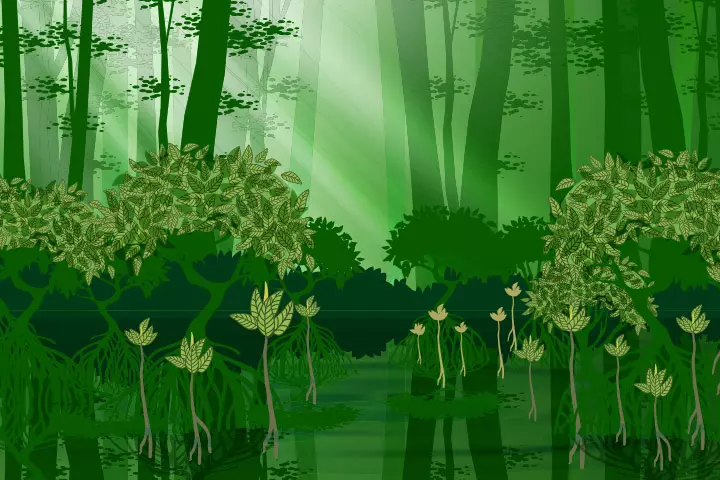
Image: Shutterstock
More than half of life-saving medicines come from the cornucopia of plants, shrubs, and trees. Over ¾ of anti-cancer drugs originate from plants and other natural sources in the rainforest. From heart disease, blood pressure, arthritisiA condition characterized by inflammation and pain in the joints, often accompanied by stiffness and limited movement. , dysentery, diabetes, etc., forest plants can cure many diseases. With the help of nature-derived medicines, you can treat more than 90% of the medical conditions known to humankind. We owe Mother Nature a lifetime debt!
25. Roots spread far and wide
Did you know most trees’ root radius is two to seven times the canopy radius? In dry conditions, they can reach seven times. Roots are opportunists. If conditions are favorable, they tend to grow more and absorb all possible nutrients. In dry conditions, they extensively stretch out to derive more soil nutrients.
Frequently Asked Questions
1. How do I explain a forest to kids?
In simple words, you can explain a forest to your child by saying–it is a large area of land filled with trees. Forests are found in the north and south poles, deserts, prairies, mountaintops, and almost everywhere. They are homes to many birds, wild animals, and insects.
2. What products are made from trees for kids?
Musical instruments, paper, maple syrup, rubber, erasers, pencils, brushes, disposable diapers, food boxes, books, toys, shoes, soap, and glue are some things made from trees and can be helpful for kids (1).
3. How can we protect forests?
To protect forests, we can practice sustainable forestry, support efforts to conserve, reduce deforestation and degradation through responsible agriculture and land use, and raise public awareness about forests’ importance and conservation. Additionally, implementing policies and regulations to protect forests, supporting reforestation initiatives, and promoting responsible consumer behavior can also help protect these vital ecosystems.
4. What can kids do to help protect forests?
To protect forests, children can plant trees, recycle, and spread awareness about forest conservation in their schools and local communities. They can also start a nature club or participate in local forest conservation events.
5. Why do animals live in forests?
Wildlife live in forests because they provide various essential resources for their survival, including food, water, shelter, and mating opportunities. In addition, forests offer a diverse range of habitats, including tall trees, dense undergrowth, and freshwater streams, which provide animals with the specific conditions they need to thrive.
Forests are an important segment of the ecosystem, and it is essential to teach your children about them so that they also learn about the benefits and unique functions that they perform. Our list of interesting facts about forests for kids can teach them the same. You can also share detailed facts about rainforests for kids, broadening knowledge. Share all the information with your children, including the types of forests, the area they cover, or the duration they have covered the earth’s surface.
Rapid urbanization and industrialization have led to the rampant cutting of forests. However, the greenery around us is not just for aesthetic purposes but is essential for life as well. The following infographic provides valuable information about forests you can share with your children to pique their curiosity about the environment and forest protection.
Some thing wrong with infographic shortcode. please verify shortcode syntaxIllustration: Informative And Fun Facts About Forests For Kids

Image: Stable Diffusion/MomJunction Design Team
Get a quick peekaboo into the amazing world of forests and woods with this fun and educational video for kids! Learn facts, take quizzes, and explore the beauty of nature!
Personal Experience: Source
MomJunction articles include first-hand experiences to provide you with better insights through real-life narratives. Here are the sources of personal accounts referenced in this article.
i. 5 Days in the Amazon rainforest|Cuyabeno reserve | Ecuador travelhttps://www.youtube.com/watch?feature=shared&v=h5HLcUsyaS4
References
- Products from Trees
https://wisconsincountyforests.com/education/products-trees/ - 10 facts to fall in love with forests.
https://unece.org/forestry/news/10-facts-fall-love-forests - 10 Facts You Didn’t Know About Forests.
https://standfortrees.org/blog/forest-facts/
Community Experiences
Join the conversation and become a part of our nurturing community! Share your stories, experiences, and insights to connect with fellow parents.
Read full bio of Beth Sullivan
Read full bio of Sravani Rebbapragada
Read full bio of Harshita Makvana
Read full bio of Praggya Joshi







